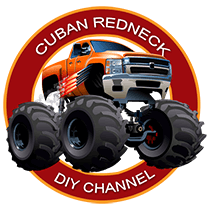Although ceramic coated pots and pans are much tougher and slippery than traditional nonstick cookware, the reality is that regardless of what they claim in the infomercial, ceramic coated pots and pans stick just like any other type. That is why thousands of people go to the internet daily searching for cleaning a ceramic pan or cleaning a ceramic pan bottom. The top trending method found on both Google and YouTube for this search is the baking soda and vinegar method. If I were a baker, cook, and or chef, I would probably go along with that since these are everyday things you find in the kitchen. Because I am none of those things, my background is engineering, and the how-to clean ceramic pans with baking soda and vinegar have not worked for me on many occasions, I had no choice but to look for alternatives.
How I Clean Ceramic Coated Pots and Pans
Because of the hard ceramic coating, the approach we employ could be a little more mechanical and with chemicals that are a little more aggressive than what you would use on traditional nonstick cookware. Since my youth, WD-40 has been one of my go-to products for loosening carbon deposits, rust, and challenging stains. Although the name of the company, WD-40, is an abbreviation for a compound know as “Water Displacement, 40th formula.” Its initial design intention was protecting the Atlas missile’s outer skin from rust and corrosion. Today, WD-40 is best known for removing grease, grime, carbon deposits, rust, and more from most surfaces. It was for this reason that I decided to try it! One thing to know about WD-40 is that it does not work instantly. When I did my original test, I completely forgot about it. Come to find out several days later that the clear WD-40 I had spayed on a severely burned ceramic skillet had turned to a brown slush. The WD-40 had, in fact, broken down the carbon deposit.
There were still a few suborn stains that required a little bit of elbow grease. Although that was ok with me, I knew that I would not fly with my mom and others and why I chose to use the Dremel Versa. I had purchased the Dremel Versa a few months earlier to clean some dry bug stains from my SUV’s nose and figure this was the ideal tool for the job. If you aren’t familiar with the Dremel Versa, it is a rechargeable mini polisher sold not only online but at many local retailers like Home Depot, Lowe’s, and Ace Hardware. The Dremel’s website says that it will “conquer the toughest dirt, scum, and spot removal on materials like glass, tile, ceramics, wood, stainless steel, and more.” I have to admit I never saw it from that point of view, but given all the available accessories and attachments available, I am surprised it is not a lot more popular.
The Cleaning Ceramic Pans Procedure
As previously said, WD-40 is not an over-aggressive product and does take time for it to work. For that reason, soaking your ceramic pans and pans with WD-40 before cleaning is required! In the video, I raised the temperature of the pan ever so slightly. The reason for that is to open the micropores in the ceramic and accelerate the WD-40’s function. WARNING: Don’t get the pan too hot as this will cause a lot of smoke and may even cause the WD-40 to flash! You want to get it hot enough to where you can barely touch it then let it stand for about 30 to 40 minutes and give the Dremel Versa a try using the blue pad! In the video, I made brief use of the brown scrubbing pad but be aware that it can cause scratches on the surface. Use very little pressure. Let the tool do its job! I think you will be amazed about how efficient this best method for cleaning ceramic pans is, and I know you will find other uses for the Dremel Versa and WD-40!
*It goes without saying that ingesting WD-40 is not a good thing, so I hope you take proper precautions after doing this and wash your ceramic pots and pans thoroughly before using them! I always let my sit overnight in soapy water and put them in the dishwasher the next day!
As always, I sincerely hope you were able to take something for this video and post and look forward to having you as a subscriber. Also, look us up on Facebook under the Cuban Redneck DIY Channel.





